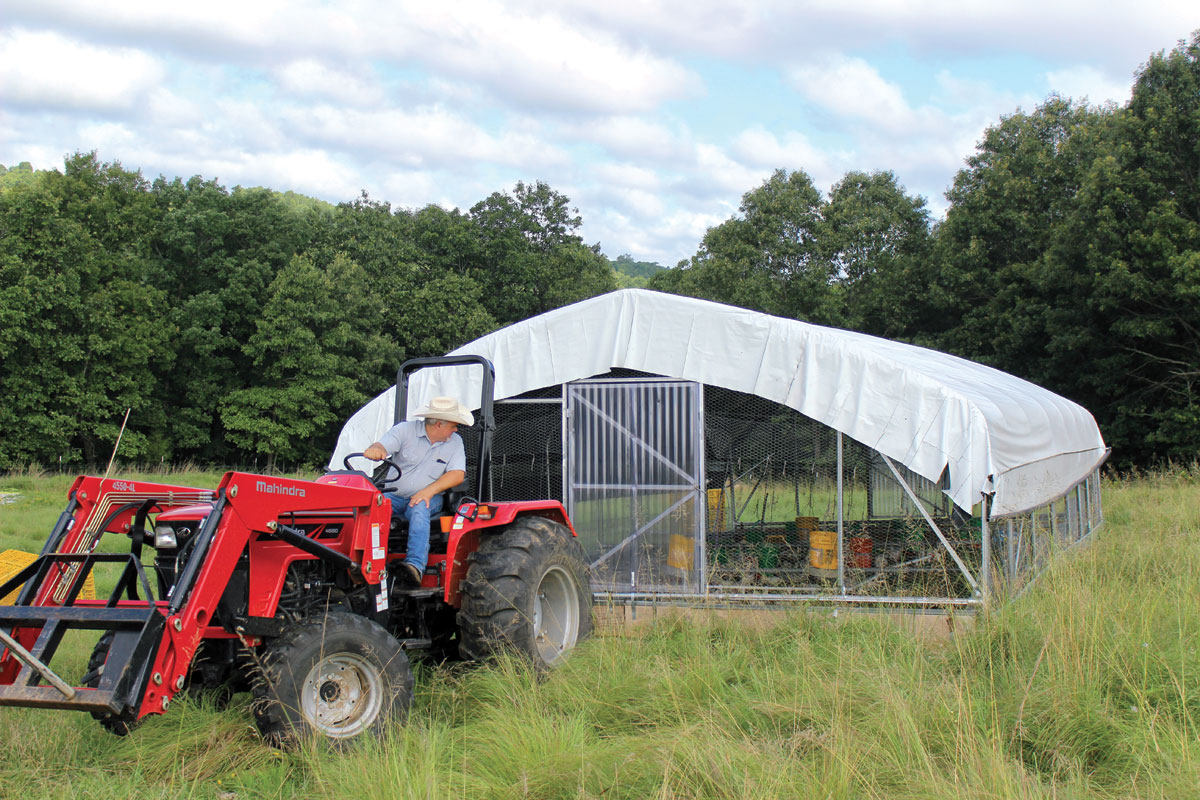
Farm sustains a variety of livestock operations with help from the NRCS
Sustainable agriculture is an on-going work in progress for Zinc, Ark., livestock producer Chris Ward.
Chris raises a variety of livestock on his 300-acre farm, including cattle, Katahdin sheep, hogs, pasture broilers, and Kiko and Spanish goats. While that may seem like a lot of variety for one farm, on Ward’s farm, every species has a specific function that parallels the definition of sustainable agriculture: the production of food, fiber, or other plant or animal products using farming techniques to protect the environment, public health, human communities and animal welfare.
Located 20 miles northeast of Harrison, Ark., the steep hillside topography is not conducive to livestock production. In fact, most producers would consider it impossible. But after serving several years in the USDA’s Foreign Agriculture Service, Chris had a vision for the farm his grandparents purchased in the 1950s.
Chris’ FAS assignment took him to Afghanistan, where he helped farmers break the economic cycle of drug production.
“You have to give the farmers something to counter growing drugs,” Chris said. “Getting them out of the drug business leaves a void. You have to fill it with something, sustainable agriculture is a logical alternative.”
Chris returned to his homestead in 2012 with a deeper appreciation for sustainable agriculture and how to implement it on his hillside farm.
“I’ve been farming my whole life,” Chris explained. “Sustainable agriculture influences how I look at everything. Plus, farming is good therapy.”
Seeking to maximize the efficiency of the farm and insure good environmental practices, Chris turned to the Harrison field office of the Natural Resources and Conservation Service. In the last two years the NRCS has provided technical and financial assistance through the EQIP program to help Chris install 6,200 feet of cross fencing, which provides for livestock rotational grazing. Using the multi-species grazing addresses several issues, including undesirable plant productivity, plant health, and inadequate and forage issues. In addition to the fencing, the NRCS assisted in laying 4,800 feet of water lines to four watering facilities, providing livestock and irrigation for pasture. Sixteen hundred square feet of heavy-use area rock pads around the watering facilities has also been installed to control soil erosion.
“I really like the way they are using the multiple animal species concept,” said Rick Adams, district conservationist with the Harrison Field office of NRCS. “It allows them to graze and browse over the same acreage rotating them at different times. This brings new meaning to maximum efficiency and sustainable agriculture.
Another term used to describe farm operations like Chris’ is stackable enterprise. It parallels everything (species) in its place, and a place for everything. In its simplest form, it is non-compete grazing.”
Predators such as coyotes can be a major problem for sheep and poultry growers. To help abate that problem, natural habitat is provided on the farm to encourage the “cycle of life.”
“We have brush piles, but we don’t burn then.” Chris said. “We build brush piles to provide small animal habitat, which provides the food chain for the predators. It takes the pressure off our livestock. Again, everything we do has a specific purpose on the farm.”
Off the farm, Chris has been active in helping establish markets for farmers who are pursuing sustainable agriculture. Chris was instrumental in establishing the Grassroots Farmers Co-op in Clinton, Ark.
All the meats processed by the co-op are pasture raised from small farmers and are GMO, antibiotic and hormone free. Chris works with other organizations like Heifer International to build markets and networks for farmers and consumers interested in sustainable agriculture.






